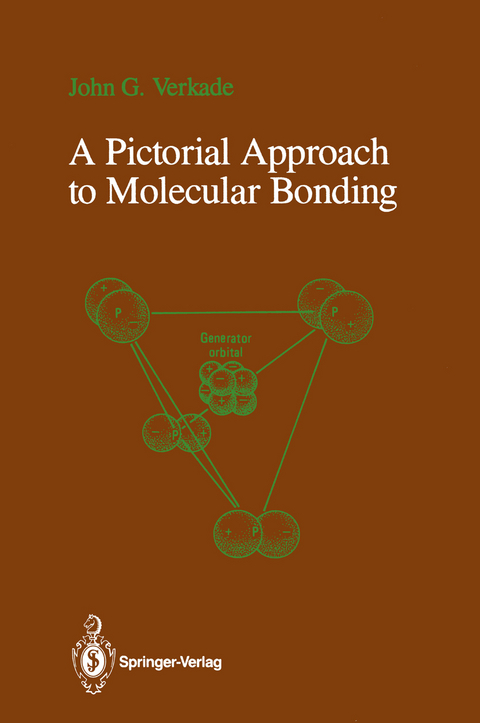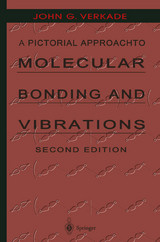
A Pictorial Approach to Molecular Bonding
Springer-Verlag New York Inc.
978-0-387-96271-9 (ISBN)
- Titel erscheint in neuer Auflage
- Artikel merken
1 The Orbital Picture for Bound Electrons.- 1.1 Traveling and Standing Waves.- 1.2 Wave Energy and Interference.- 1.3 Electron Orbitals.- 1.4 Normalization and Orthogonality.- 1.5 Systems with Many Electrons.- 1.6 Flexibility of Orbital Sets.- 2 Atomic Orbitals.- 2.1 Shapes of Canonical Orbitals.- 2.2 Sizes of Canonical Orbitals.- 2.3 Energies of Canonical AOs.- 2.4 Hybrid Orbitals.- 2.5 Hybrid Orbitals through s-p Mixing.- 2.6 Equivalent s1p1 Hybrid Orbitals.- 2.7 Equivalent sp2 Hybrid Orbitals.- 2.8 Equivalent sp3 Hybrid Orbitals.- 2.9 Intermediate Hybrid Orbitals.- 3 Diatomic Molecules.- 3.1 Molecule Formation and Motions.- 3.2 Generator and Molecular Orbitals.- 3.3 Generator Orbitals and Molecular Motions.- 3.4 Bond Strengths.- 3.5 Heteronuclear Diatomic Molecules.- 3.6 Localized MOs for Diatomic Molecules.- 4 Linear Triatomic Molecules.- 4.1 Linear FHF-.- 4.2 FXeF.- 4.3 OCO.- 4.4 Vibrational Modes for Linear Triatomics.- 5 Triangular and Related Molecules.- 5.1 H3+.- 5.2 N3+.- 5.3 Electron Dash Structures and Molecular Geometry.- 5.4 BF3.- 6 Bent Triatomic Molecules.- 6.1 H2O.- 6.2 NO2-.- 7 Polygonal Molecules.- 7.1 Te42+.- 7.2 c-C4 H4.- 7.3 c-C5H5-.- 7.4 c-C6H6, c-C 7H 7+, c-C8H82-.- 8 Octahedral and Related Molecules.- 8.1 ICl4-.- 8.2 BrF5.- 8.3 B5H9.- 8.4 PF6-.- 8.5 Octahedral Transition Metal Complexes— Some Special Considerations.- 8.6 CoF 63- and Co[P(OCH3)3]63+.- 8.7 B6H62-.- 8.8 Mo6 Cl 84+.- 9 Tetrahedral and Related Molecules.- 9.1 PnH3.- 9.2 P4.- 9.3 CH4.- 9.4 PO43-.- 9.5 VCl4-.- 10 Bipyramidal and Related Molecules.- 10.1 BrF3.- 10.2 SF4.- 10.3 B5H52-.- 10.4 PF5.- 10.5 IF7.- 11 Prismatic Molecules.- 11.1 C6H6 (Prismane).- 11.2 C8H8 (Cubane).- 11.3 (?5-C5H5)2Fe.- Appendix I Symmetry, Molecular Orbitals, and Generator Orbitals.- Appendix II A Kit forVisualizing MOs in Three Dimensions.- Appendix III Hybrid GOs and Non-Cooperating Central Atoms.- Appendix IV Calculating the Angles for Conal Nodes.- Appendix V A Summary of Uses for Generator Orbitals.
| Erscheint lt. Verlag | 24.9.1986 |
|---|---|
| Zusatzinfo | Illustrations |
| Verlagsort | New York, NY |
| Sprache | englisch |
| Themenwelt | Naturwissenschaften ► Chemie ► Anorganische Chemie |
| Naturwissenschaften ► Chemie ► Physikalische Chemie | |
| ISBN-10 | 0-387-96271-9 / 0387962719 |
| ISBN-13 | 978-0-387-96271-9 / 9780387962719 |
| Zustand | Neuware |
| Haben Sie eine Frage zum Produkt? |
aus dem Bereich



